As our truck bumped along a dirt road into the Pantanal, Brazil’s famous flooded grasslands, nature guide Julinho Monteiro offered the standard disclaimer: “I can’t guarantee wildlife, of course. We’ll try, but seeing a jaguar is never easy.”
Jaguar? I didn’t expect to see a jaguar. My goal for this trip was to observe capybaras. Julinho laughed when I mentioned it. “OK, I said no guarantees, but I will guarantee you’ll see plenty of capybaras.”
And over the next week, we did. Hundreds of capybaras (and we did see those jaguars, too). Capybaras at rest, swimming, grazing, even leaping. The giant rodents of my dreams.
Since I was a kid, the capybara has been one of my favorite mammals. How can you not love a rodent that can weigh 140 pounds? They roam around in herds like deer and antelope. And they’re cute.
The capybara is full of surprises. Let’s look at some of them.
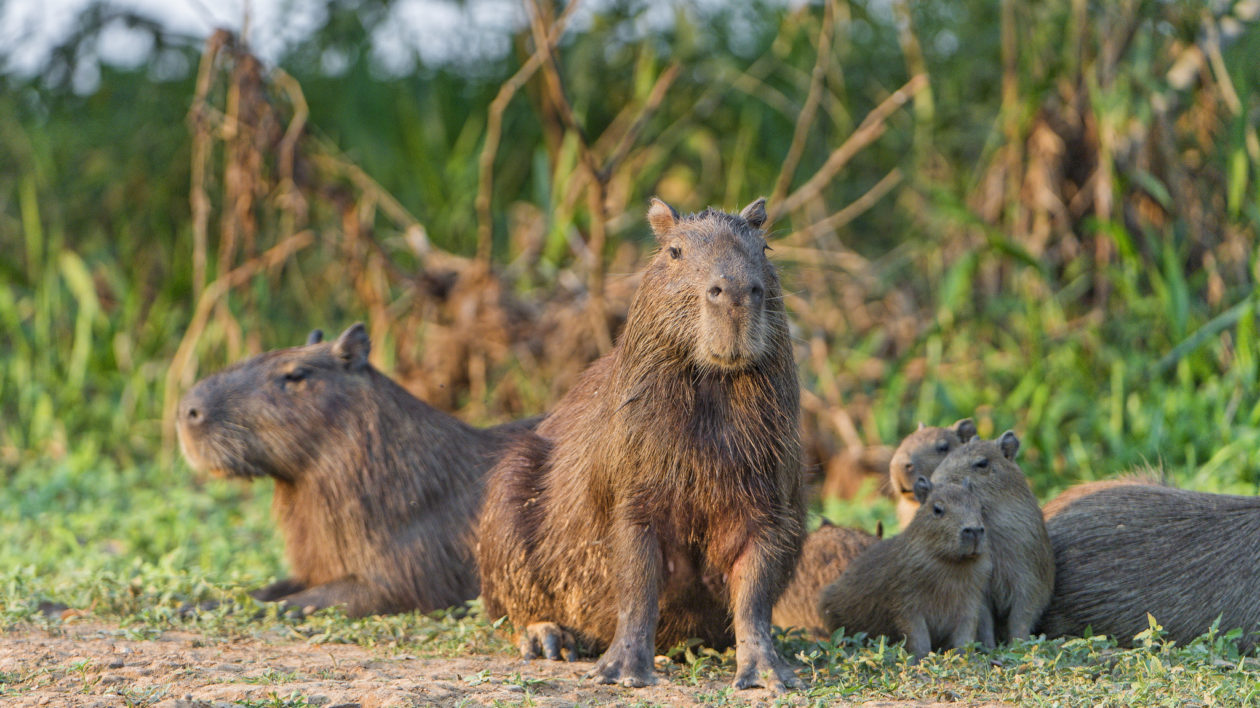
Life as a Large Rodent
Capybaras occupy a wide range in Central and South America. They can occupy a wide range of habitats, from open plain to dense rainforest, but they’re never far from water. Spotting one in the Amazon is somewhat difficult. But in seasonally flooded grasslands, like the Pantanal, they’re highly visible.
This is in part because they’re social animals: they live in small family groups consisting of a dominant male, females and young, and subordinate males. There are other social rodents. Prairie dogs and ground squirrels live in colonies. Beaver family groups are well studied. But capybaras are interesting because they roam around the savanna in herds.
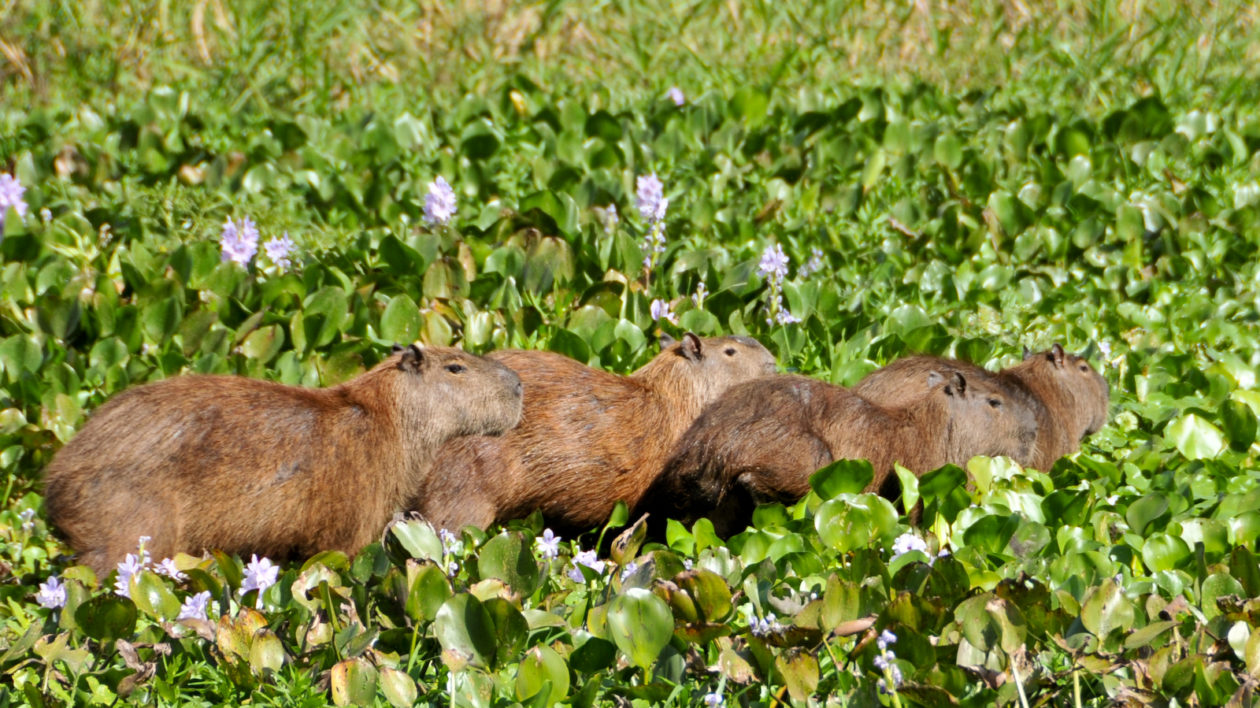
They behave a lot like the hoofed mammals we often associate with grasslands. There are indeed native hoofed mammals in the Pantanal, but the most conspicuous herds are of capybaras.
Capybaras are herbivorous eating grasses, brush and even tree bark, although they can be picky about what plants they’ll eat. But its their other dining habit that is most famous: they eat their own feces.
Coprophagia, as the practice is known, is not all that unusual in the animal kingdom. Rabbits do it, but they’re somewhat discrete about it. Capybaras conspicuously eat it as soon as it exits, before it even hits the ground. One writer calls it “a maneuver that calls to mind a teenager sticking his head under a Slurpee machine.” OK, so this is not the most endearing of capybara traits.
They do this to extract all the nutrients they can from difficult-to-digest plants, and also to reintroduce helpful bacteria into their guts.
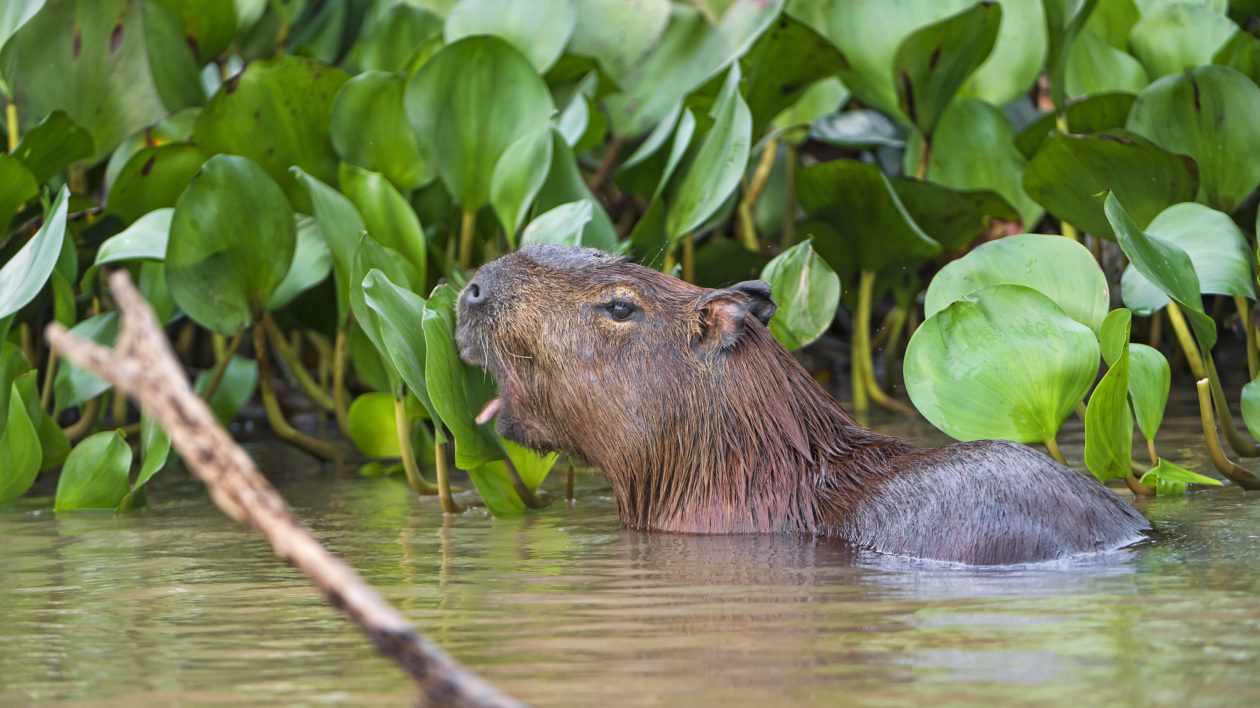
Scent Marking
Capybaras use a variety of vocalizations, but their most important communication is by scent. The rodents have anal scent glads as well as a more conspicuous gland on their snout, known as a morillo. In males, the morillo is quite large and noticeable, and resembles a large, dark hump.
Capybaras scent mark just about everything. There is extensive research on the topic, although there is a lot that is still unknown about the function. Basically, scent marking serves a variety of functions for capybaras.
The family group uses it to mark off their territory. Males use it to establish dominance, and females use it to advertise when they’re in heat. They may also use scent to convey other information about individual or group identity.
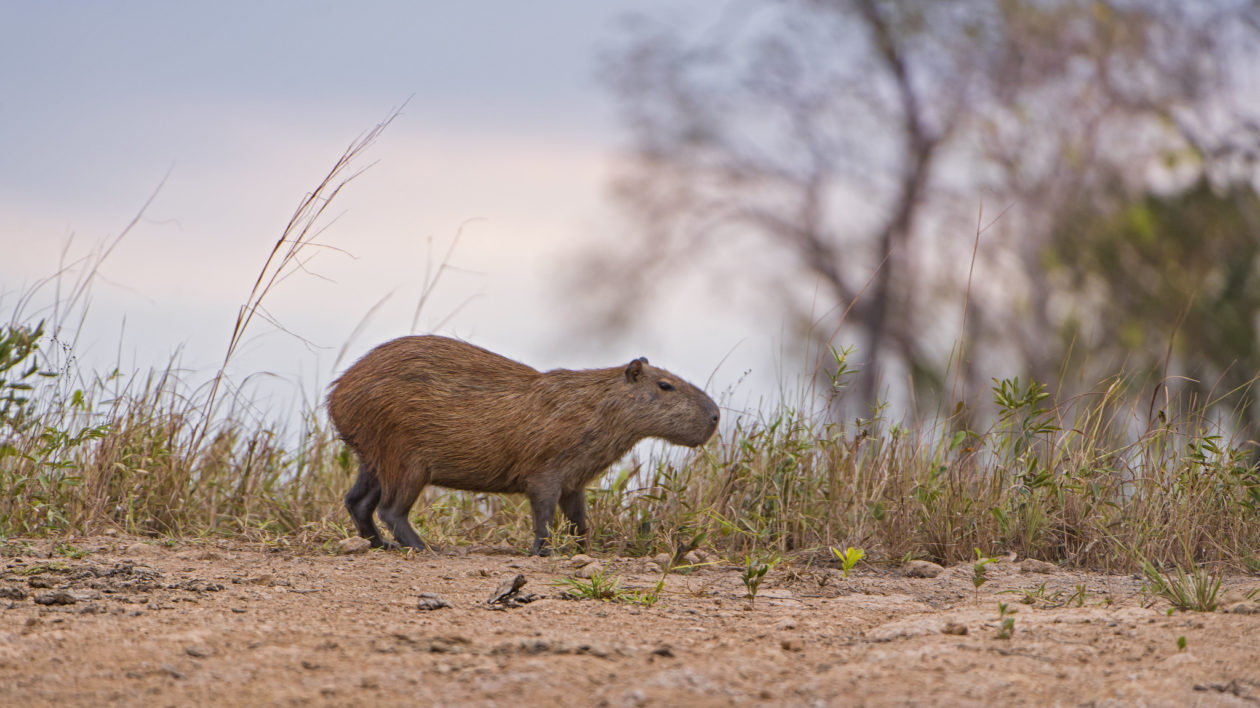
Mating in Water
Capybaras are never far from water. They use it to escape predators like jaguars. They can stay completely submerged for five minutes. The shape of their heads allows them to keep their nose and eyes above water, while still presenting a low profile while swimming. As we boated along the Pantanal, sometimes capybaras would “cannonball” off banks into the river, disappearing from view.
They graze along the water. They defecate in the water. And, most notably, they always mate in the water.
Capybara mating rituals are pretty dramatic. When a female is ready to mate, she’ll send out scent cues and then enter the water and start swimming back and forth. If a male enters who is not her choice, she will simply swim underwater or run back onto land. If it is the male she wants, they mate underwater for a period of about six seconds.
The dominant male spends a lot of time ensuring that he is the one who gets to mate. Dominance is enforced in the group year round. Subordinate males generally move up in rank when the dominant male dies, but there are usually several subordinate males in a group. This means some males never assume top rank.
However, keeping track of a group of capybaras is hard work. So the subordinate males do frequently mate while the dominant male is preoccupied.
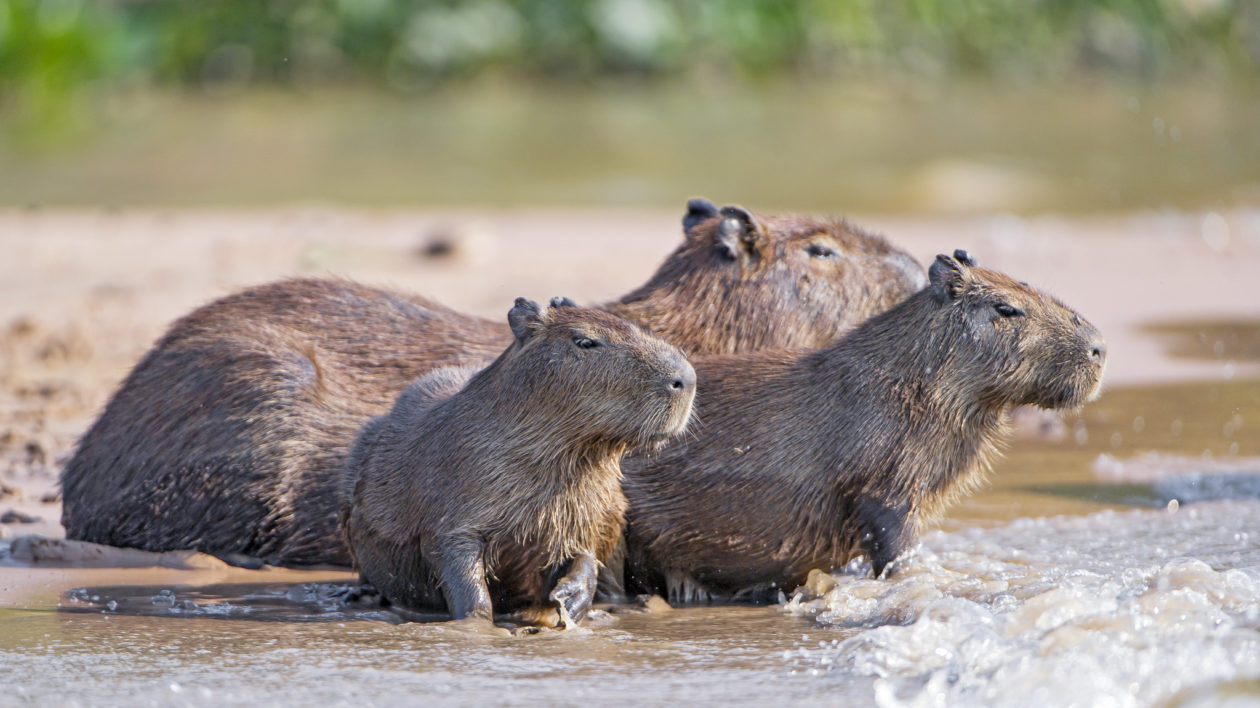
Sustainable Capybara?
In 2008, I received a Nature Conservancy fellowship to help communicate conservation programs in Colombia. I spent a month in the country, including time in the grassland region known as Los Llanos, another area that is capybara central.
This region had suffered from a disturbing period of violence, with local ranchers caught between rival FARC and right-wing paramilitary groups. I heard many heart-wrenching and terrifying stories of what people endured. By the time I visited, the area was experiencing peace and stability, and ranchers were looking for ways to diversify incomes.
And one of those ways was by increasing the numbers of capybaras on their lands. Capybara, or carpincho as it was locally known, was already on the menu in most Llanos restaurants. We were also served it on ranches, and it was indeed a mild, tasty meat. The idea was that ranchers could give more of their land to capybaras, benefiting the ecosystem while providing another source of income.
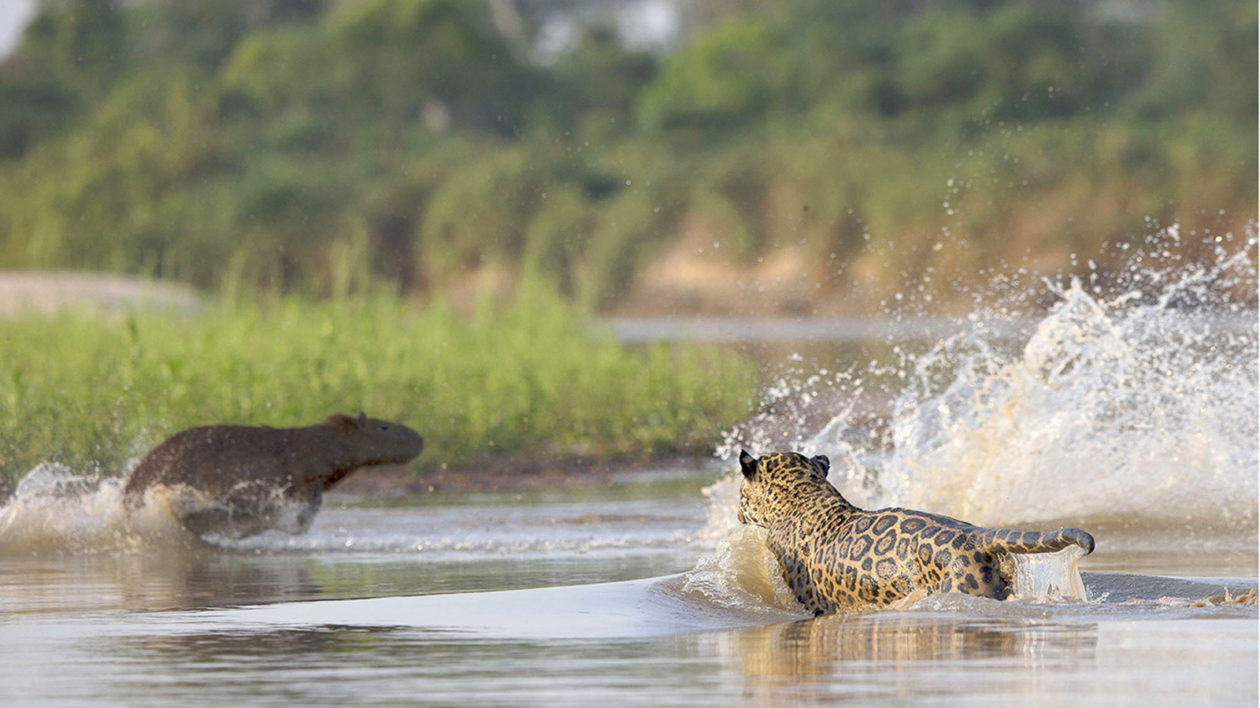
Capybaras have long been harvested for their meat and fur around South America. In Venezuela, a priest famously declared them as a “kind of fish” so the could be eaten during Lent, which has led to a traditional harvest there.
There is a lot of attention on the impacts of cattle grazing. Encouraging native herbivores – the animals that have always roamed grasslands in large numbers – seems like a promising future for sustainable meat.
As far as I know, unfortunately the sustainable capybara project never got going in Colombia. Sometimes conservation initiatives don’t work. In the Llanos, the problem of scale quickly became clear. As a recent paper in Nature Sustainability noted, sometimes conservation means going ranch to ranch. That is the case in Los Llanos. The problem is, reaching even one ranch involved expedition-level planning. One ranch we visited required a horseback ride for the final leg of the journey.
Still, I think the idea was sound. Turning the grassland back over to the rodents makes a lot of sense, for the ranchers and for the ecosystem.
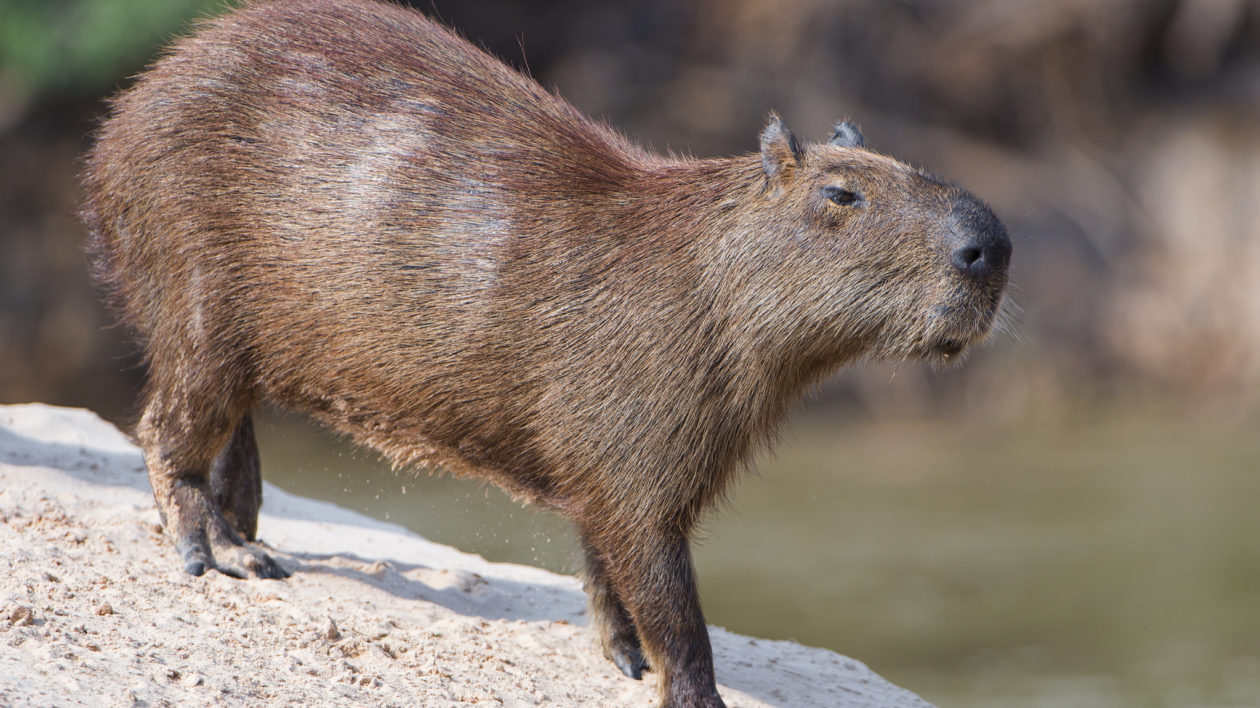
Invasive Capybaras
Maybe you’re disturbed by the thought of eating capybaras. It’s probably because they’re cute. Really cute. You might imagine it’s like having a guinea pig that has the attributes of a large dog. So maybe it’s not such a leap to imagine them as pets.
Stop right there. For reasons that should by now be obvious, capybaras are not pet material. As capybara biologist Elizabeth Congdon told a reporter for The Verge:
“They’re going to poop all over your yard, and you’re going to have to have a kiddy pool for it, and they’re going to pee in that kiddy pool, and it’s going to be disgusting, and after a couple years, you’re going to be tired of it, but it’s still going to be alive, and then what are you going to do with it?”
The answer, unfortunately, is that many pet owners will set them free. And then capybaras could go invasive. This has already apparently happened in places that combine a warm climate with a tradition of people keeping exotic pets. Namely: Florida and Texas.
In Florida, they may already be breeding, and some fear they could be the next famous invasive species in that state. Given the devastating ecological and economic impacts in the southern United States of another invasive aquatic rodent, the nutria, state wildlife officials are taking the threat of free-ranging capybaras seriously.
But in their place, they really are fascinating creatures to observe – whether in the wild or at a local zoo. Enjoy their antics. Just don’t take one home with you.
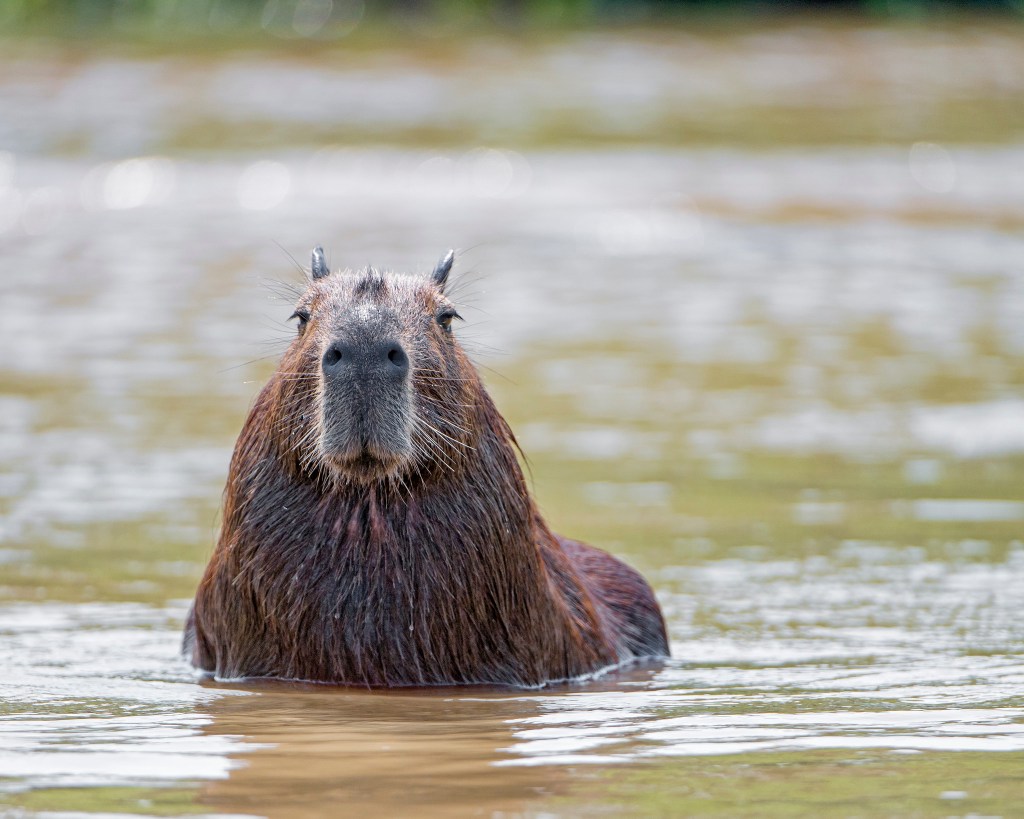



A comprehensive and interesting article thanks for your efforts
Could you maybe add a paragraph about them being poached, and how we can help them? They are my favorite animal, and I would STRONGLY dislike them to go extinct. So I would like to help in anyway possible to type up a paragraph for your guys. (Harper Smith Wilson from 5th grade.)
Back in the mid 80s while vacationing the Outer Banks of N Carolina I was kayaking in the Bay area.. I noticed the large rodint while padding… Could this have been possible..
It was most likely a nutria, a large, invasive rodent from South America that can be found in many parts of the southern United States. It was unlikely to be a capybara.
Thanks for writing.
Matt